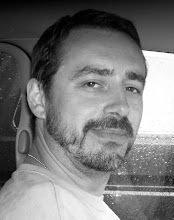 X-Men: The Last Stand (hereafter referred to as X3) is a skimpy, shallow follow-up to the excellent X-Men and X2. Director Bryan Singer, who left this series to tackle Superman Returns, is replaced at the helm by Brett Ratner, best known for the Rush Hour franchise and Red Dragon (his modestly successful stab at a serious thriller).
X-Men: The Last Stand (hereafter referred to as X3) is a skimpy, shallow follow-up to the excellent X-Men and X2. Director Bryan Singer, who left this series to tackle Superman Returns, is replaced at the helm by Brett Ratner, best known for the Rush Hour franchise and Red Dragon (his modestly successful stab at a serious thriller). To X3 Ratner brings little of the smarts and humanism evident in the first X-men films. Singer obviously cared about the characters and lent some weight and heft to the stories, and emphasized the subtext of the social outsiders considering how to interface with a hostile culture. Ratner seems to keep plot and character to a minimum and skip as quickly as possible to the next action sequence or cool digital effect. In contrast to the classy, almost art-house photography of the Singer films, the look of X3 is cheap, approximating a B-grade or direct to video movie. There’s even a bad continuity error at the climax, with day suddenly turning to night, unforgivable in a big-budget picture. Even the action sequences that are clearly the film’s raison d’etre are generally flat and uninspiring, shot with a lack of imagination. Though X3’s rushed production schedule are no doubt partly to blame, Ratner displays little grace in his direction of the movie.
He isn’t well served by the script, either. The story attempts to bring two main threads together: a cure for the ‘Mutant X’ gene offered to the mutant population and the differing responses it provokes from Xavier (Patrick Stuart) and Magneto (Ian McKellen); and the resurrection of Jean Grey (Famke Janssen) as the Phoenix, an incredibly powerful mutant that may be unable to control her powers. Both storylines have potential, but joining the two in one film gives short thrift to both, and the Phoenix storyline in particular suffers direly from truncation.
The script also needlessly kills off several major characters, with the result that at the end, as the remaining X-Men go into battle, we are left with almost no-one to root for (or at least almost no-one that we give a damn about anymore). Halle Berry was probably one of the few on the planet that thought Storm’s role should be expanded. Unfortunately, this is a big misstep as the character is as dull as ditchwater and is misguidedly supposed to be the centrepoint of the X-Men at the barely-engaging climax. Thank god we have Hugh Jackman as Wolverine, who is around to provide one of X3’s few endearing characters and toss off a couple of genuinely witty one-liners.
The ‘action-packed’ climax of X Men: The Last Gasp is seriously flawed because: (a) we don’t particularly care about the characters; (b) the idea of Magneto making a section of the Golden Gate Bridge detach and fly away was probably more exciting in concept than it is in dreary execution; and (c) what the X-Men and Magneto’s forces hope to accomplish in their big battle is muddled, and I don’t think this was a result of conscious ambiguity.
Though the ending hints at another sequel, I doubt there will be an X4. And you know what? I don’t particularly give a rat’s ass. Bring on a Wolverine movie. Oh, and leave Ratner out of it, ok?
--
Directed by Brett Ratner
Written by Simon Kinberg and Zak Penn
Starring:
Hugh Jackman....Logan/Wolverine
Halle Berry....Ororo Munroe/Storm
Ian McKellen....Eric Lensherr/Magneto
Famke Janssen....Dr. Jean Grey/Phoenix
Anna Paquin....Marie/Rogue
Kelsey Grammer....Dr. Hank McCoy/Beast
Rebecca Romijn....Raven Darkholme/Mystique
James Marsden....Scott Summers/Cyclops
Shawn Ashmore....Bobby Drake/Iceman
Aaron Stanford....John Allerdyce/Pyro
Vinnie Jones....Cain Marko/Juggernaut
Patrick Stewart....Professor Charles Xavier
Ben Foster....Warren Worthington III/Angel





